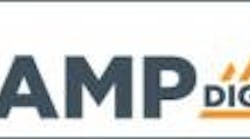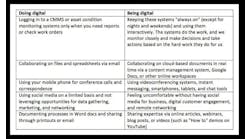Solving the skills gap with a MindShift in learning
By Robert Joseph, Ph.D., former Director of Industrial Strategy for Industry 4.0 with Stanley Black & Decker; Quin Bradley, Chief Customer Officer for Team Mindshift; Stacey Young Rivers, Mercer University Ph.D. Educational Leadership Candidate
The evolution of a business’ ability to create a workforce equipped for this ever-changing environment profoundly abides within at least these three areas: technology, education, and the cost of goods and services. The exponential growth of technology, the foundational industrial-age educational system in America, and the focus on producing more products and providing quality services for less money are causing an unprecedented skills gap in the manufacturing industry.
In 2018, a Manufacturing Institute and Deloitte report found that the top cause of the shortage of skilled workers for most manufacturers is “shifting skill sets due to the introduction of new, advanced technology and automation." They projected that within the next decade 2.4 million jobs may be left unfilled due to a lack of skilled workers.
Conversely, what could not be accounted for in Deloitte’s projection was a global pandemic that will most likely accelerate the demand for shifting skill sets. According to McKinsey & Company’s April 2020 Report, “Assessing the Near Term Impact of COVID-19 on US Workers”, up to one-third US jobs are vulnerable, with 44 million to 57 million jobs susceptible to reduced income, furloughs, and layoffs. Now, the demand to shift skill sets will be required on many levels, but first, we have to shift mindsets to overcome the after-effects of the new norm and accelerate the learning process.
In a TED Talk by Educator Sir Ken Robinson, he discusses how the current educational system was based on industrial-age learning design and techniques that are no longer appropriate for this new technology age.
Technology is here to stay and will only continue to grow at a faster pace partially due to our building upon the work of the past, creating exponential growth in new products and services. These technological solutions will yield the ability to produce with greater efficiency and competitiveness that demand a paradigm shift in how we learn and apply new innovative advancements.
The imperative question for companies to answer is, “How do we address employee skill gaps to prepare for the future?” There are three approaches, and when used together, can create a paradigm shift that enhances employee development and fosters innovation.
Create a culture of learning. We need a roadmap to upskill employees for addressing current technology AND preparing them for the technology that has not even been invented yet. How can this be done? The first step is to create a mind shift in how people approach learning and transform businesses to embrace a learning culture.
We introduce the three-part EL³G Team MindShift learning method:
- First, address the emotions and self-talk (E) that people experience while learning. For example, instead of saying, “I’m not good in math;” Instead, I’m getting better in math.” This language shift allows you to take ownership of your education.
- Second, Learn to Learn how to Learn”(L³) meaning build a mental model of the subject. This is discussed next.
- Third, take these techniques and Generalize (G) the techniques to any domain of knowledge that you want to learn.
Expand existing mental models. We need to overlay skills-based learning with functional-based understanding. This means the mental discovery of how things work and not just how to get things to work. As you learn a new domain you want to start to ask yourself:
1. What are the main concepts for this domain?
2. How do the different concepts interact with each other?
3. What are other domains that have similarities to this domain?
4. How do the skills that I am learning relate to the concepts that I am developing?
There is no right or wrong mental model. It is a tool that you use to organize information to accomplish your goals and is based on your perspective. These concepts or mental models of the domain should always be actively developed and will change over time. A mental model helps you reason about the domain, effortlessly replace old technology with new, and gives you the freedom and insights to be creative.
Encourage R&D in every part of the organization. We need to demystify what it means to innovate. Traditionally, Research and Development (R&D) were reserved for a specific segment of the company to explore ways to create a competitive advantage. Bridging learning with new mental models encourages exploration and practical application. This fosters a need to encourage employees to perform R&D as part of their learning experience to improve morale and enhance performance.
So what does using a mental model in learning look like? An example of this can be illustrated by co-author Robert Joseph with his cousin, who struggled to learn how to tread water even after many swimming lessons. The instructors focused on what to do instead of what to achieve. However, within five minutes, Robert was able to teach his cousin how to tread water like a pro. His approach was to share the two major elements of treading water; the body needs to be water dynamic and only breathe when you need to breathe. His cousin was able to realize there was no benefit in holding her head 10 ft out of the water (just kidding but you get the picture) and she could finally relax her body. She was amazed that this simple discussion had shifted her thinking so profoundly to overcome a situation that had plagued her for years. The positive results came from developing a mental model of functionally for what needed to happen (achieve). As you can see here, a mental model technique can be applied anywhere.
Furthermore, skills-based training does not have the capacity to keep pace within a rapidly growing and changing technology environment. Once an employee learns new skills, immediately another set of skills is needed in its place. Therefore, a paradigm shift into a new approach to employee learning is imperative to address the gap in workplace preparedness to equip workers with tools to embrace change quickly. This new-age learning environment will need to be supported within a company culture that rewards new approaches to learning. It is designed to build a sustainable mental model for employees to address future business challenges.
The art of creating a cultural change requires the company to:
1. Commit from the front line to the boardroom to adopt a paradigm shift in mindset.
2. Use disruptive-training techniques moving from skill-based learning to functional-based learning.
3. Develop deep mental models of how to be effective with the current skill in a way that allows future skills to integrate easily into a learn model framework.
4. Acknowledge the rapidly changing technological environment and embrace the soft skills needed to create sustainable outputs in learning.
Learning for this digital age must be disruptive through a mind shift, allowing faster learning for using technology quickly that, in some cases, has not been invented yet. Remember a MindShift in learning can have a major positive shift on the bottom line.
Disclaimer: The content in this article is the opinions of the authors and do not represent any company or organization they are associated with.



